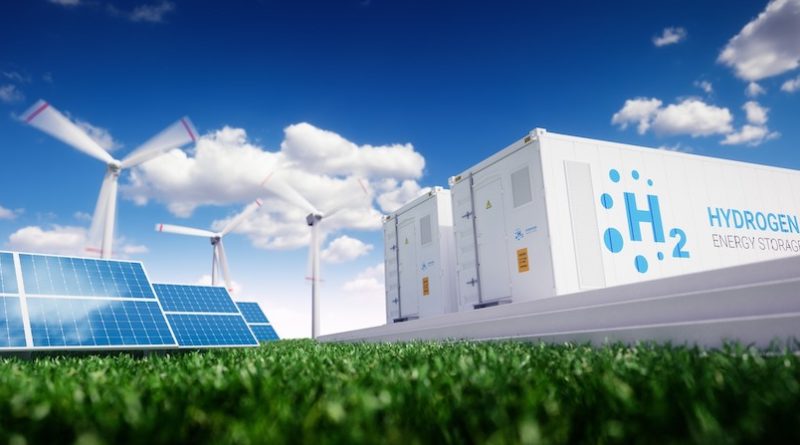
Deploying Clean Hydrogen Energy for a climate-neutral Future
The European Union has endorsed the Paris Agreement and has committed with the European Green Deal to achieve climate neutrality by 2050 through a just transition. This transition implies the decarbonisation of the entire economy, including hard-to-decarbonise sectors.
This transition towards a clean energy system also needs to ensure security of supply and affordability of energy. As hydrogen produced through electrolysis with electricity from renewable energy sources is a clean alternative to fossil fuels and can be used for various purposes, including feedstock for industrial processes, fuel cells and energy storage, it can make a valuable contribution to this transition. However, hydrogen represents only a small part of the European energy mix and 95% of our hydrogen production is currently based on fossil fuels1. Furthermore, clean hydrogen is not yet competitive. Due to the currently limited availability of low-carbon and clean hydrogen, its use should be concentrated on sectors that operate close to competitiveness of hydrogen or that currently cannot be decarbonised by other means. Examples are the steel and chemical industry and aviation and maritime transport.
Thus, the EU needs to develop a sustainable hydrogen economy that aims at making clean hydrogen competitive as soon as possible. For this, a hydrogen strategy that covers the whole hydrogen value chain, includes demand and supply sectors and is coordinated with national efforts, is necessary.
The European Commission has made a first step in this direction by adopting “A hydrogen strategy for a climate-neutral Europe” in July 2020.
However, hydrogen is not the silver bullet solution to decarbonisation. Instead, direct electrification should be considered the preferable option for decarbonisation. In addition, the EU needs to base its hydrogen economy on clean hydrogen, as only clean hydrogen is sustainable in the long term. To ramp up clean hydrogen production and establish the hydrogen economy fast enough to achieve our climate goals, low-carbon hydrogen can play a transitional role, as clean hydrogen is not yet sufficiently abundant and competitive. However, the European Commission should continuously assess for how long, for which purposes and how much low-carbon hydrogen is needed. I am furthermore convinced that it is important that fossil-based hydrogen is phased out as soon as possible.
Hydrogen Classification and Standards
In order to create an ecosystem for investments, a single European classification for the different types of hydrogen is needed. I support the Commission’s proposed classification based on the carbon content of hydrogen and stepping away from the commonly used colour-based approach. In addition, we need to be able to clearly identify clean hydrogen. For this purpose, I suggest the development of standards and a European certification and labelling system based on an independent, science based review of the lifecycle emissions of hydrogen production. As clean hydrogen production is based on renewable electricity, we also need guarantees of origin for hydrogen and renewable electricity. These elements are important for hydrogen consumers to be able to invest consciously in clean hydrogen options.
Ramping up Hydrogen Production
To achieve the ambitious goals set in the Commission proposal for a Hydrogen strategy, to scale up the production of clean hydrogen and to establish a functioning and predictable clean hydrogen market that attracts investments, a comprehensive regulatory framework for hydrogen needs to be put in place. The EU gas market regulatory framework could serve as a blueprint, due to the common features of hydrogen and gas, together with the Clean Energy Package, due to its holistic approach to reviewing the functioning of the energy market.
To ramp up clean hydrogen production and to prevent diverting renewable energy from other use cases to hydrogen production, the EU also needs to create sufficient additional renewable energy production.
This goes hand in hand with providing the necessary infrastructure for renewable energy, including transporting renewable energy to hydrogen production sites. The Commission and Member States should ensure that the missing infrastructure is provided as soon as possible. In addition, as renewable electricity is responsible for a significant part of clean hydrogen production costs, it is important to reduce costs by abolishing taxes and levies on renewable electricity in order to achieve competitiveness.
Hydrogen Infrastructure
The EU should avoid a chicken and egg problem between hydrogen infrastructure, production facilities and demand. We need to develop all elements from the start. The EU should incentivise infrastructure development, e.g. through the revision of the TEN-E regulation. I support the Commission’s approach to start planning the medium range and backbone transmission infrastructure from the start to develop a fully-fledged internal hydrogen market as soon as possible.
As cost-efficiency is always important, the existing gas infrastructure could be retrofitted for pure hydrogen use, which could reduce investment costs and levelise the costs of transmission. Hence, this possibility should be assessed on a European and national level.
Hydrogen Demand
The hydrogen demand side is a crucial aspect for developing a clean hydrogen market and can contribute to decarbonisation. Therefore, clean hydrogen needs to become a more attractive business case for hard-to-abate sectors than investments into fossil-based solutions. Only then, the EU would be able to prevent carbon lock-ins and to achieve decarbonisation in time.
In order to have a better oversight of the clean and low-carbon hydrogen needed, I suggest sector roadmaps that lay out the development of hydrogen demand and investment and research needs for the different demand sectors.
These roadmaps should be drafted on a European level in close cooperation between stakeholders and European institutions.
Due to the current lack of competitiveness of clean hydrogen, we should also consider putting in place targeted demand-side policies such as quotas for the use of clean hydrogen in the focus sectors. Innovative measures such as carbon contracts for difference should also be taken into account. The Commission needs to detail, however, how such measures could be financed and implemented.
Research, Development, Innovation and Financing
Furthermore, development and innovation along the whole value chain of clean hydrogen remains of paramount importance. We need demonstration projects of industrial scale to be able to implement hydrogen solutions in demand sectors. Here, the European institutions have to ensure the full involvement of SMEs: Some can deliver innovative solutions, while the bulk of them may have limited resources to implement clean hydrogen solutions for their own decarbonisation.
In order to meet the high investment needs to establish a clean hydrogen economy, European programmes can play an important role. Especially, NextGenerationEU, Horizon Europe, the Connecting Europe Facility, InvestEU and the ETS Innovation Fund can help financing clean hydrogen projects and attract additional public and private investments The European Parliament shall continue to push to provide these programmes with sufficient financial resources in the annual budget circle.
The Role of Hydrogen in an Integrated Energy System
Furthermore, I underline the importance of an integrated energy system to promote renewable energy. The gas, electricity and hydrogen grids should be coordinated.
Here, hydrogen can play a key role as energy storage to balance intermittent renewable energy supply and demand. This solution is not competitive yet and the EU needs further investments for this purpose.
Therefore, I welcome the alignment of the hydrogen and the energy system integration strategies. I am now waiting for the Commission’s concrete legislative proposals and revisions of relevant existing legislation to set the regulatory framework for a competitive and clean hydrogen market to see if all the aforementioned priorities will be reflected. In the meantime, I am excited to continue the negotiations for the European Parliament’s own initiative report on the European hydrogen strategy as Rapporteur. I believe that it can be a valuable input for the legislation to come.
_______________________________________________________________________________________________________________
1 European Commission: Hydrogen generation in Europe: Overview of key costs and benefits, July 2020, https://op.europa.eu/en/publication-detail/-/ publication/7e4afa7d-d077-11ea-adf7-01aa75ed71a1/ language-en




